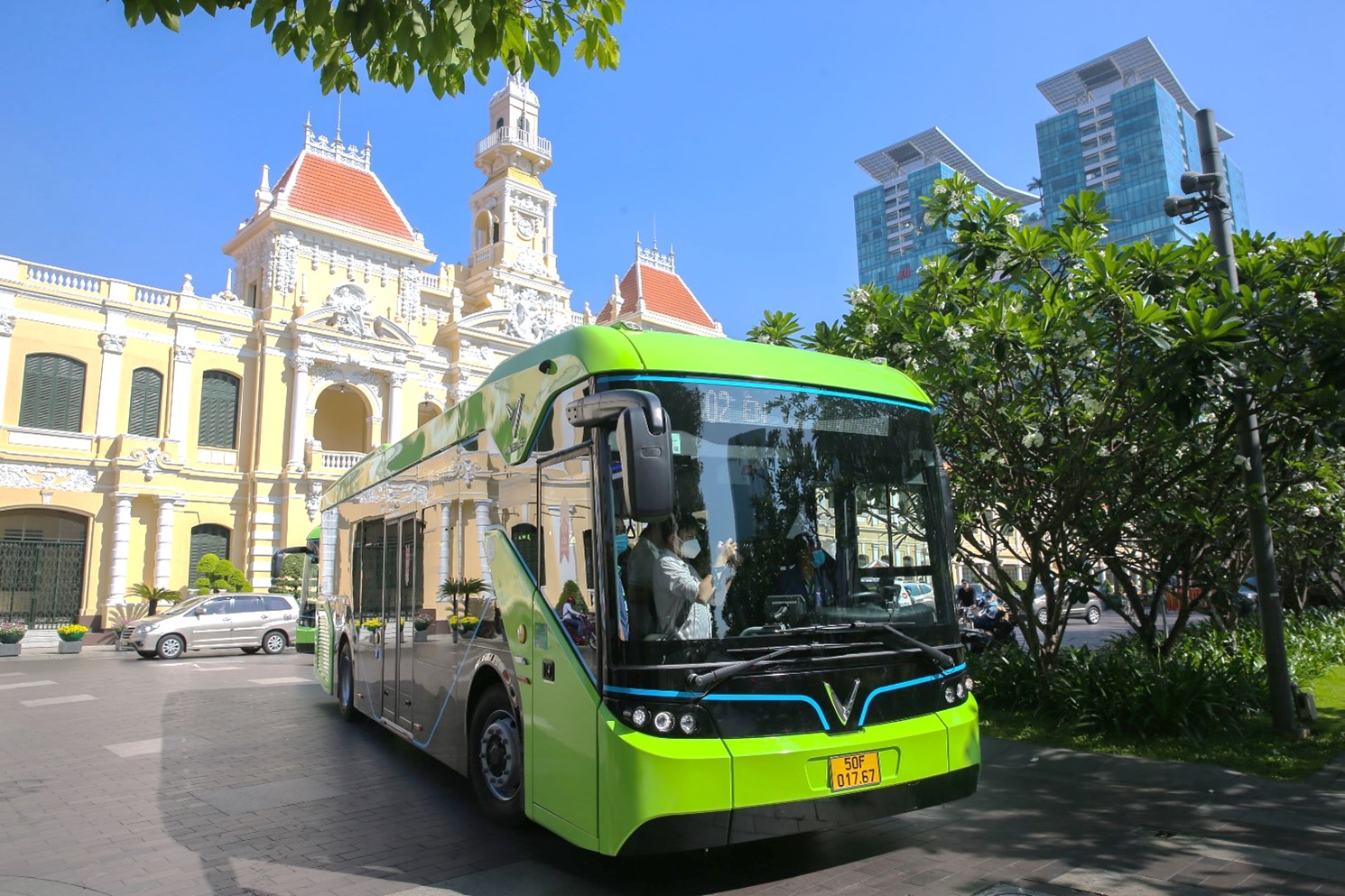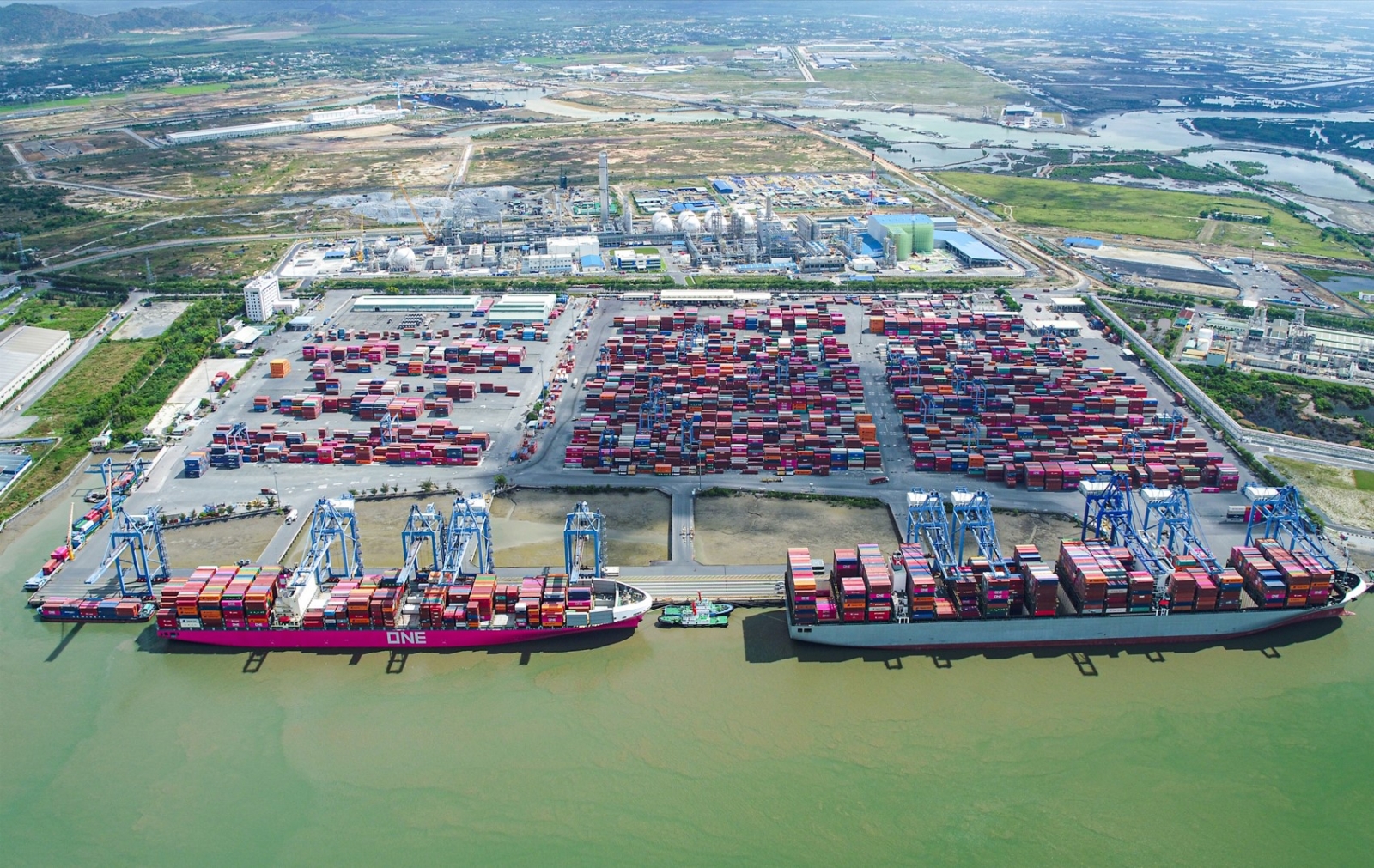To fulfill the commitment at the 26th Conference of the Parties to the United Nations Framework Convention on Climate Change (COP26) which is to achieve net-zero emissions by 2050, Vietnam is prioritizing "greening" efforts to both land and sea transport with new business opportunities and challenges as well.
Eco public transport
Regarding road transportation, within the framework of Decision No. 876/QD-TTg on approving the Action Program for Transition to Green Energy and Mitigation of Carbon Dioxide and Methane Emissions from Transportation, the government has set ambitious targets for Hanoi and Ho Chi Minh City to increase the adoption rate of green bus to 50% by 2030 and achieve 100% by 2035.
Representatives from Hanoi's Department of Transportation indicated that the city currently operates the most diverse range of environmentally friendly public transportation in Vietnam. These include compressed natural gas (CNG) buses, electric buses, electric taxis, metro systems, electric scooters, and public bicycles.

Electric buses running on the streets of Ho Chi Minh City. (Photo: Vinbus)
Out of the 2,034 buses, 277 utilize clean energy sources (139 CNG buses and 138 electric buses), accounting for 13.6% of the entire network in Hanoi city. And the government intends to replace the remaining 1,757 diesel fuel buses. It is estimated that the replacement rate will be about 8% every year from 2025 to 2035.
Ho Chi Minh City's Department of Transportation has deployed 77 electric buses on 5 out of its 128 bus routes, in addition to 500 CNG buses. The city plans to draft policies for the development of electric and environmentally friendly vehicles by early 2024.
Representatives from both Hanoi and Ho Chi Minh City's Transportation departments suggest that the central government should establish mechanisms and policies for loan incentives to public transportation infrastructure and green energy buses production. They also advise drafting up the scale and ticket pricing for electric and green energy buses to facilitate future bidding and procurement. Furthermore, they call for improvement and expansion of the charging infrastructure to meet the growing demand for charging stations.
Green ports plan
Regarding the "greening" of ports, the Vietnam Maritime Administration has issued basic standards for "green ports" to guide port operations and developers in implementing transition plans. These standards involve the use of renewable energy sources such as wind and solar energy, LNG, hydrogen, and ammonia. The Cat Lai Port and Cai Mep Port in Ho Chi Minh City were recognized as green ports by the Asia-Pacific Economic Cooperation (APEC) in 2018 and 2021.

Cai Mep Port, one of the green ports recognized by APEC in Vietnam. (Photo: Cai Mep International Terminal)
Representatives from Saigon Newport Corporation stated that in the greening transformation, they have replaced diesel-powered handling equipment with electric ones, resulting in annual savings of 1.5-2 million USD in fuel costs. Mr. Ho Lien Nam, Vice General Manager of Quy Nhon Port, said that after investing in greening port equipment, the efficiency has been boosted by 10-20%. Moreover, operational costs have significantly decreased, a diesel crane that lifts one piece of goods consumes nearly 1 liter of fuel, costing about 20,000 VND (0.83 USD). However, using an electric crane only consumes around 3,000 VND (0.12 USD). Furthermore, electric equipment is durable, and the depreciation and maintenance costs are lower.
Many companies are keen to build smart ports and green ports to achieve environmental goals and enhance business competitiveness. However, according to representatives from Saigon Newport Corporation, newly constructed ports will follow green port criteria issued by the Port Authority of New South Wales, which might be challenging for enterprises to implement immediately, but they need to start taking action and draft up roadmap.
Vietnam currently still lacks mechanisms, policies, or financial support for green port transformation, and enterprises are unable to estimate the transition cost. Minister of Transport Nguyen Van Thang said that they are actively seeking financial support from international organizations and official development assistance (ODA) to drive Vietnam's transportation infrastructure and green transformation forward.




